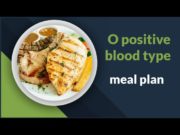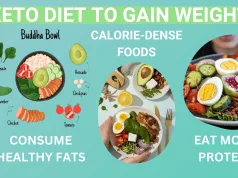How to create your own diet similar to Optavia? It’s about embracing a personalized approach to weight management, inspired by the core principles of the Optavia program. This guide will equip you with the knowledge to design a customized diet that aligns with your individual needs and preferences, while still leveraging the effectiveness of Optavia’s methodology.
We’ll delve into the foundational elements of Optavia, such as its emphasis on portion control, nutrient-rich foods, and a balanced approach to healthy eating. You’ll learn how to create your own meal plans, identify key nutrients, and track your progress effectively. Whether you’re looking to shed pounds, improve your overall health, or simply explore a new way of eating, this guide will empower you to take control of your dietary journey.
Understanding Optavia: How To Create Your Own Diet Similar To Optavia
Optavia is a weight-loss program that combines a structured meal plan with coaching and support. It’s known for its focus on portion control and healthy eating habits.
Optavia’s Core Principles
Optavia’s core principles are based on the idea of “Habits of Health” which aims to create sustainable lifestyle changes for long-term weight management. The program emphasizes:
- Portion Control: Optavia emphasizes consuming smaller, pre-portioned meals and snacks to help manage calorie intake and promote satiety.
- Nutrient-Dense Foods: Optavia encourages the consumption of nutrient-rich foods, including lean proteins, fruits, vegetables, and whole grains, to provide essential vitamins and minerals while keeping calories relatively low.
- Balanced Macros: Optavia promotes a balanced intake of macronutrients (proteins, carbohydrates, and fats) to support energy levels and maintain a healthy metabolism.
- Mindful Eating: Optavia encourages mindful eating practices, such as paying attention to hunger cues and satiety signals, to develop a healthier relationship with food.
- Lifestyle Changes: Optavia emphasizes the importance of making sustainable lifestyle changes, such as regular physical activity, stress management, and adequate sleep, to support weight loss and overall well-being.
Optavia’s Meal Plans
Optavia offers various meal plans, with the most popular being the “Optavia 5 & 1” plan. This plan involves consuming five Optavia Fuelings per day, which are pre-packaged, calorie-controlled meals, and one Lean & Green meal, which is a meal prepared at home using fresh ingredients.
Fuelings
Optavia Fuelings are pre-portioned, calorie-controlled meals designed to provide a balance of macronutrients and essential vitamins and minerals. Each Fueling contains approximately 100-150 calories and is typically a combination of:
- Protein: Fuelings often include lean protein sources such as chicken, fish, tofu, or eggs.
- Carbohydrates: Fuelings typically contain complex carbohydrates from sources like whole grains, fruits, or vegetables.
- Healthy Fats: Fuelings may include small amounts of healthy fats from sources like nuts, seeds, or avocados.
Optavia offers a wide variety of Fuelings to cater to different dietary preferences and needs, including options for vegetarians and vegans.
Lean & Green Meals
Lean & Green meals are meals prepared at home using fresh ingredients. They are designed to be nutrient-rich and calorie-controlled, typically consisting of:
- Lean Protein: Lean & Green meals should include a source of lean protein, such as chicken, fish, tofu, or beans.
- Non-Starchy Vegetables: Lean & Green meals should be filled with non-starchy vegetables, such as broccoli, spinach, or carrots, to add volume and nutrients.
- Healthy Fats: Lean & Green meals may include a small amount of healthy fats from sources like olive oil, avocado, or nuts.
Optavia provides guidelines for preparing Lean & Green meals, including portion sizes and recipes.
Optavia’s Approach to Weight Loss
Optavia’s approach to weight loss focuses on creating a calorie deficit through portion control and healthy eating habits. The program emphasizes consuming nutrient-dense foods and avoiding processed foods, sugary drinks, and unhealthy fats.
Comparison with Other Diets
Optavia’s approach to weight loss shares similarities with other popular diets, such as:
- Weight Watchers: Both Optavia and Weight Watchers emphasize portion control and healthy eating habits. However, Optavia uses pre-packaged Fuelings, while Weight Watchers uses a points system to track calorie intake.
- Intermittent Fasting: Optavia does not explicitly promote intermittent fasting, but the 5 & 1 plan can be considered a form of time-restricted feeding, as it involves consuming meals within a specific time window.
- Ketogenic Diet: Optavia does not follow a ketogenic diet, but it does emphasize consuming a balanced intake of macronutrients, including proteins and healthy fats, which are key components of the keto diet.
Optavia’s approach to weight loss is unique in its focus on pre-packaged Fuelings and its emphasis on creating sustainable lifestyle changes.
Creating Your Own Optavia-Inspired Diet
Optavia’s principles revolve around portion control, calorie restriction, and a focus on lean protein, healthy fats, and fiber. While Optavia offers pre-packaged meals, you can easily create your own customized diet plan that aligns with these principles.
Designing a Meal Plan
A well-designed meal plan ensures you get the nutrients your body needs while staying within your calorie goals. You can adapt Optavia’s structure by choosing your own foods and ensuring they fit into the program’s guidelines.
- Fuelings: These are small, protein-rich snacks that help control hunger and stabilize blood sugar. Choose from options like Greek yogurt, hard-boiled eggs, or a handful of nuts.
- Lean & Green: This is the main meal of the day, consisting of lean protein, non-starchy vegetables, and a small portion of healthy fats. Examples include grilled chicken with broccoli and avocado, or salmon with asparagus and a drizzle of olive oil.
- Optavia-Inspired Meals: Instead of pre-packaged meals, create your own versions using recipes that adhere to the program’s principles. This allows for more variety and creativity.
Nutritional Considerations

Creating a diet plan similar to Optavia requires a solid understanding of nutritional principles to ensure you meet your body’s needs while supporting your weight management goals. This section delves into the key nutrients essential for a balanced diet, the role of specific nutrients in weight management, and how to choose nutrient-rich foods that contribute to overall health and well-being.
Macronutrients and Micronutrients
Macronutrients are the building blocks of our bodies, providing energy and structure. They include carbohydrates, proteins, and fats. Micronutrients, on the other hand, are essential for various bodily functions, including metabolism, growth, and development. They encompass vitamins and minerals.
A balanced diet should contain an appropriate ratio of macronutrients and micronutrients, ensuring the body receives all the essential nutrients for optimal functioning.
Importance of Protein, Fiber, and Healthy Fats
- Protein plays a vital role in building and repairing tissues, regulating hormones, and supporting a healthy immune system. It also helps you feel full, which can be beneficial for weight management.
- Fiber, a type of carbohydrate found in plant-based foods, promotes digestive health, helps regulate blood sugar levels, and contributes to satiety.
- Healthy fats, such as those found in avocados, nuts, and olive oil, are essential for hormone production, cell function, and absorption of certain vitamins. They also contribute to feelings of fullness and can help you feel satisfied after meals.
Choosing Nutrient-Rich Foods
- Prioritize whole, unprocessed foods: Choose fruits, vegetables, lean proteins, whole grains, and healthy fats over processed foods, sugary drinks, and unhealthy fats.
- Read food labels: Pay attention to serving sizes, calories, macronutrient content, and added sugar. Look for foods with lower sodium and higher fiber content.
- Cook more meals at home: This gives you more control over ingredients and allows you to make healthier choices.
Healthy Snack and Meal Ideas, How to create your own diet similar to optavia
- Snacks:
- A handful of almonds or walnuts
- A piece of fruit with a tablespoon of peanut butter
- Greek yogurt with berries
- Hard-boiled eggs
- Meals:
- Grilled salmon with roasted vegetables
- Chicken stir-fry with brown rice
- Lentil soup with whole-wheat bread
- Quinoa salad with black beans, corn, and avocado
Monitoring Progress and Adjustments
It’s crucial to track your progress and make adjustments to your Optavia-inspired diet to ensure it remains effective and sustainable. This involves monitoring your food intake, measuring your progress, and making adjustments based on your individual needs and goals.
Tracking Food Intake
Tracking your food intake helps you understand your dietary patterns and identify areas for improvement.
- Use a food diary or app to record everything you eat and drink.
- Pay attention to portion sizes and calorie content.
- Track your macronutrients (protein, carbohydrates, and fats) if desired.
- Review your food log regularly to identify any patterns or areas where you can make changes.
Measuring Progress
Measuring your progress helps you stay motivated and ensures you’re on track to achieve your goals.
- Weigh yourself regularly, but don’t obsess over daily fluctuations.
- Take body measurements (waist, hips, etc.) to track changes in body composition.
- Monitor your energy levels, sleep quality, and overall well-being.
- Set realistic goals and celebrate your successes along the way.
Staying Motivated and Overcoming Challenges
Staying motivated is essential for long-term success with any diet.
- Find a support system: Share your goals with friends, family, or an online community for encouragement and accountability.
- Set realistic goals: Avoid setting unrealistic expectations, as this can lead to frustration and discouragement.
- Focus on the positive: Celebrate your successes, no matter how small, and focus on the benefits of your healthier lifestyle.
- Reward yourself: Treat yourself to non-food rewards for achieving your milestones.
- Be prepared for setbacks: Everyone experiences setbacks, so don’t let them derail your progress. Learn from your mistakes and get back on track.
Adjusting Your Diet
Your Optavia-inspired diet should be tailored to your individual needs and goals.
- Consult with a healthcare professional: They can help you create a safe and effective diet plan based on your medical history and individual needs.
- Monitor your progress: Track your weight, body measurements, and overall health to determine if adjustments are necessary.
- Adjust your calorie intake: If you’re not seeing results, you may need to adjust your calorie intake. Consult with a healthcare professional or registered dietitian for personalized guidance.
- Experiment with different foods: If you’re finding it difficult to stick to your diet, experiment with different healthy foods and recipes to find what works best for you.
Consulting with a Healthcare Professional
Consulting with a healthcare professional is essential for personalized guidance and ensuring the safety and effectiveness of your Optavia-inspired diet.
- A healthcare professional can assess your individual needs and goals and develop a personalized diet plan that meets your requirements.
- They can also monitor your progress and make adjustments to your diet as needed.
- Consulting with a healthcare professional is especially important if you have any underlying medical conditions or are taking medications.
Conclusive Thoughts
By understanding the principles behind Optavia and applying them to your own dietary preferences, you can embark on a personalized weight management journey that aligns with your individual goals. Remember, consistency, moderation, and a focus on nutrient-rich foods are key to achieving lasting results. Embrace the flexibility of creating your own Optavia-inspired diet, and watch as your health and well-being flourish.
Questions and Answers
Is Optavia a good diet for everyone?
Optavia, like any diet, may not be suitable for everyone. It’s important to consult with a healthcare professional to determine if it aligns with your individual needs and health conditions.
How do I know if I’m getting enough nutrients on a Optavia-inspired diet?
Focus on incorporating a variety of nutrient-rich foods into your meal plan. Consider consulting with a registered dietitian for personalized guidance on meeting your nutritional needs.
Can I use Optavia products in my own diet plan?
While you can use Optavia products, you’re not required to. The focus is on creating a customized plan based on your preferences and needs.
Creating your own diet similar to Optavia can involve focusing on portion control and nutrient-dense foods. However, if you’re concerned about fatty liver disease, it’s important to consult a doctor and explore specific dietary recommendations. For instance, you might want to consider a diet that emphasizes healthy fats and reduces sugar intake, as outlined in this article on what diet for fatty liver.
By combining your personalized approach with expert guidance, you can create a sustainable and effective dietary plan for your specific needs.
Creating your own Optavia-like diet can be a great way to personalize your weight loss journey. You can start by understanding the typical average diet of an American and identify areas where you can make healthier choices. From there, you can build your own meal plan that incorporates similar principles of portion control, nutrient-dense foods, and regular physical activity, ensuring it aligns with your individual needs and preferences.
Creating your own diet similar to Optavia can be a great way to manage your weight and improve your health. A key aspect of Optavia is its focus on high-fiber foods, which help you feel full and satisfied. To incorporate more fiber into your own diet, you can check out this helpful guide on how to get more fiber in your diet.
Once you’ve incorporated more fiber into your meals, you can then create your own personalized meal plan that includes plenty of fruits, vegetables, and whole grains, similar to the Optavia approach.
























